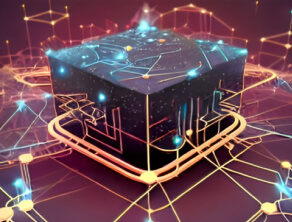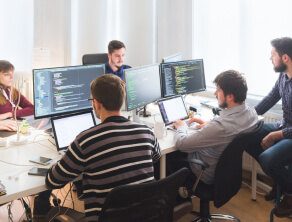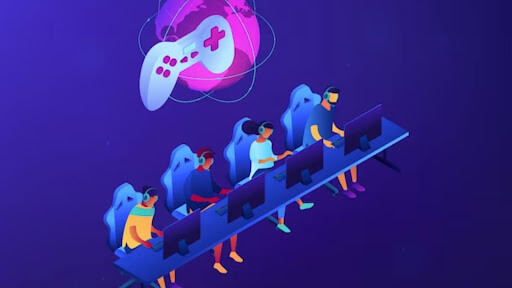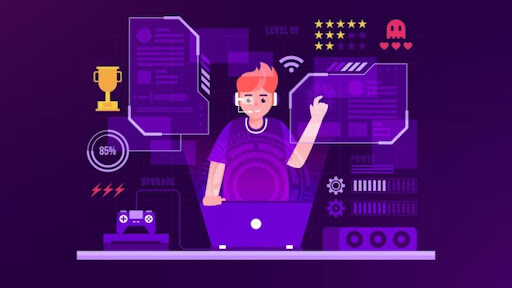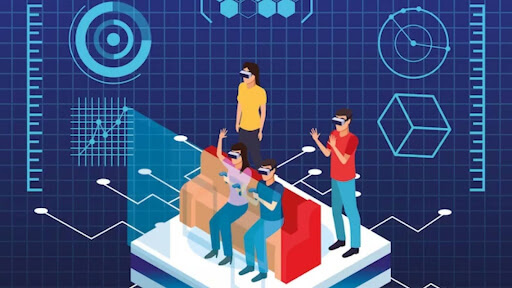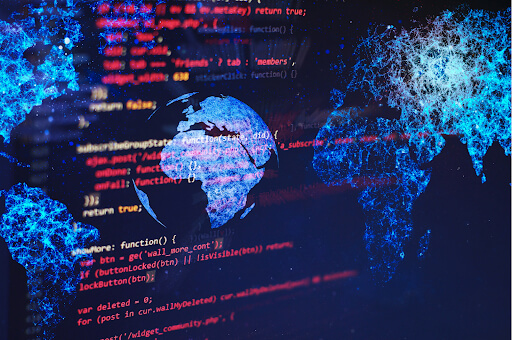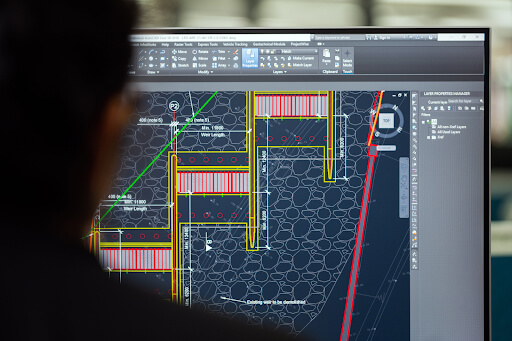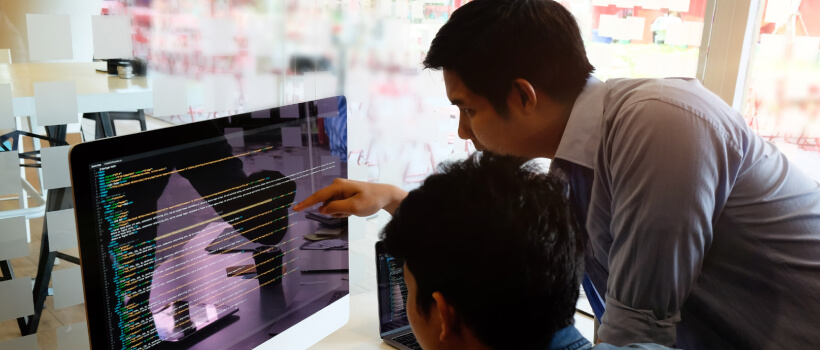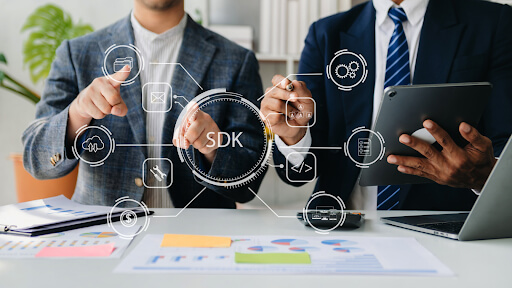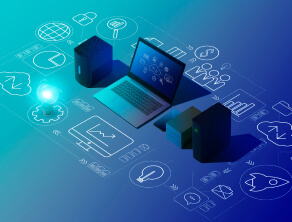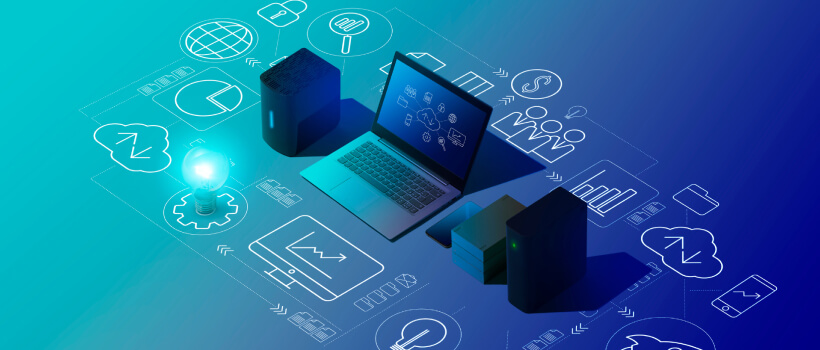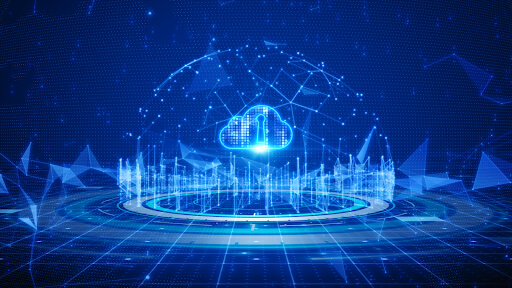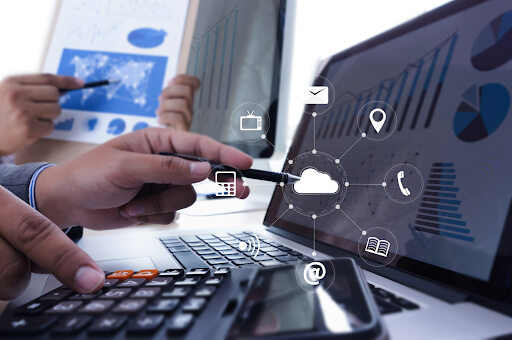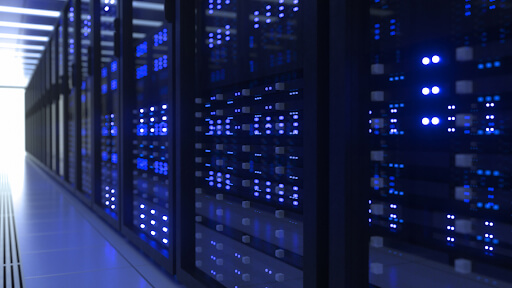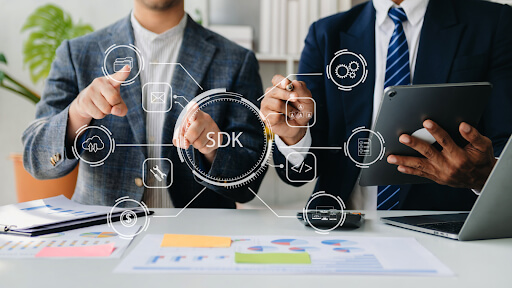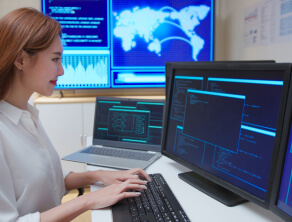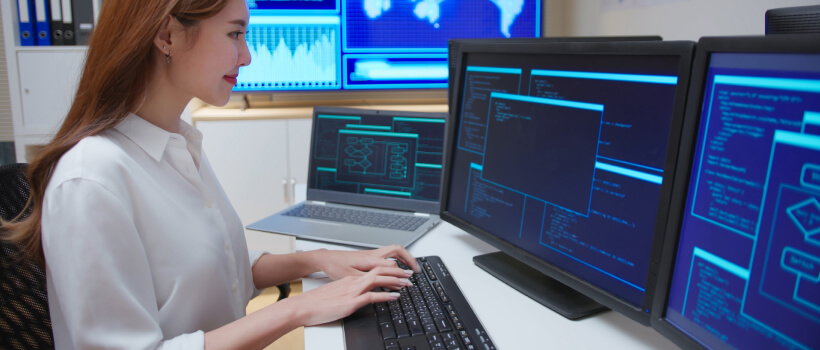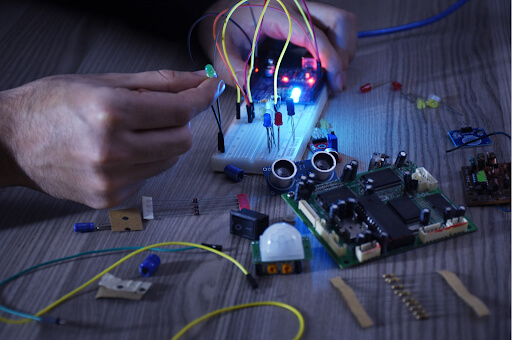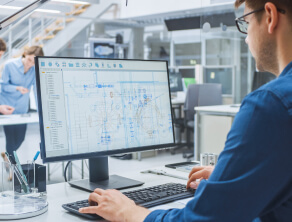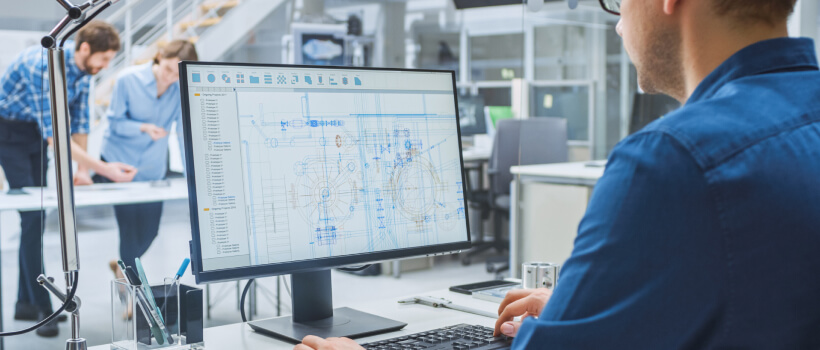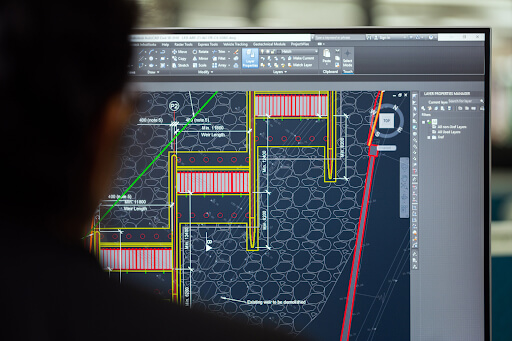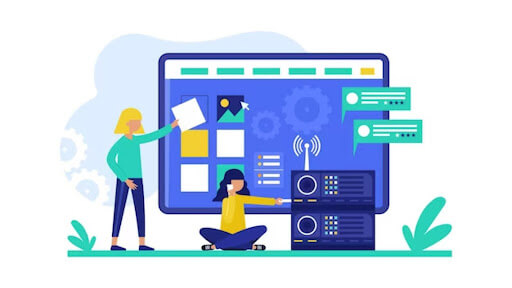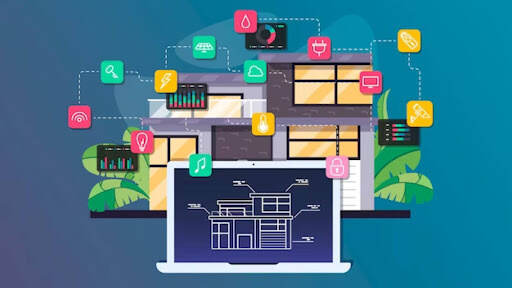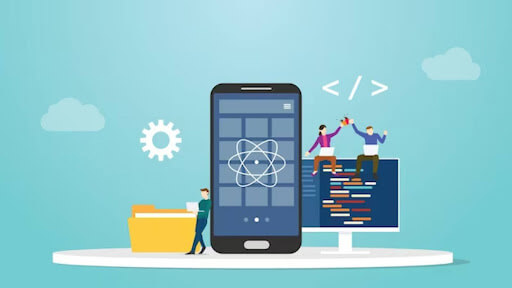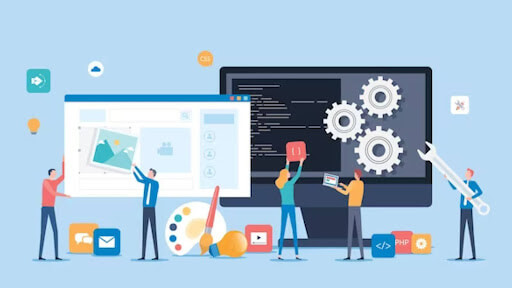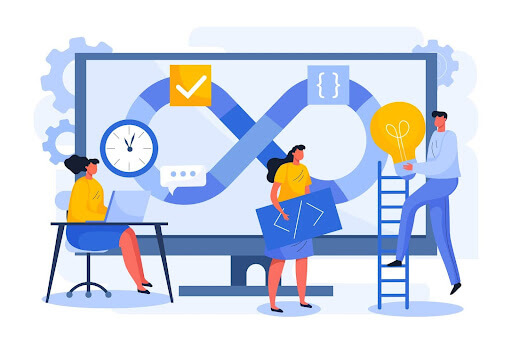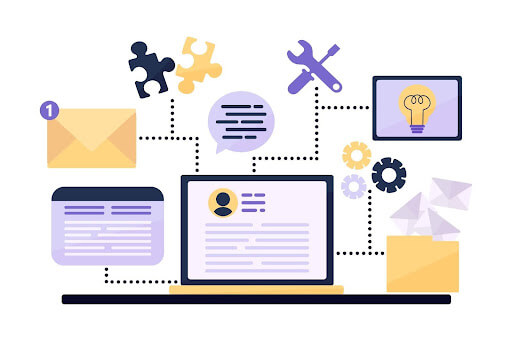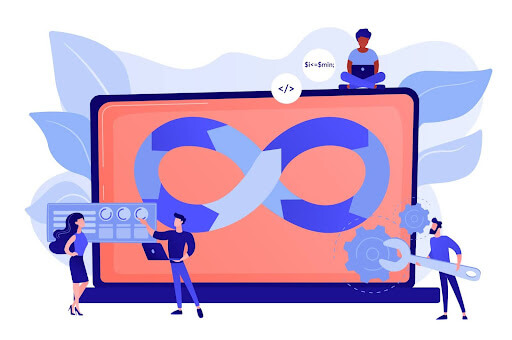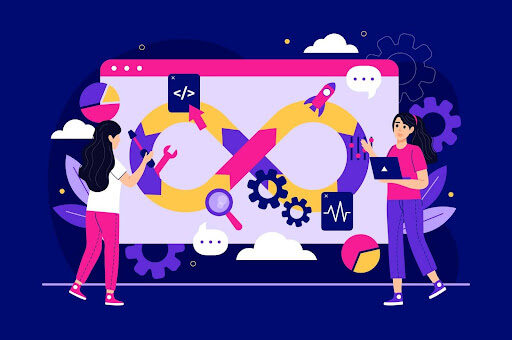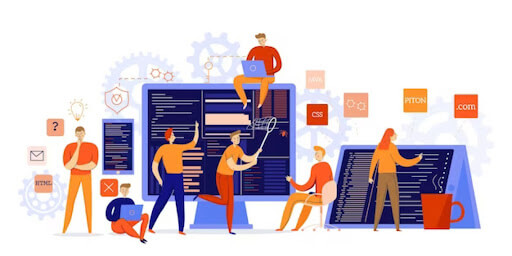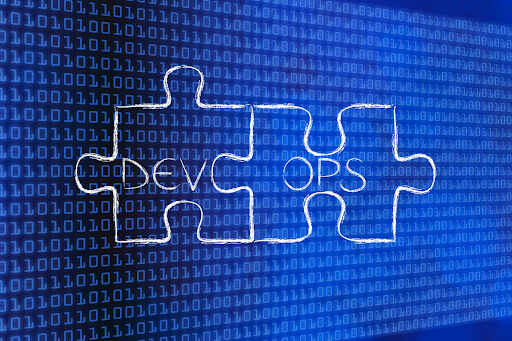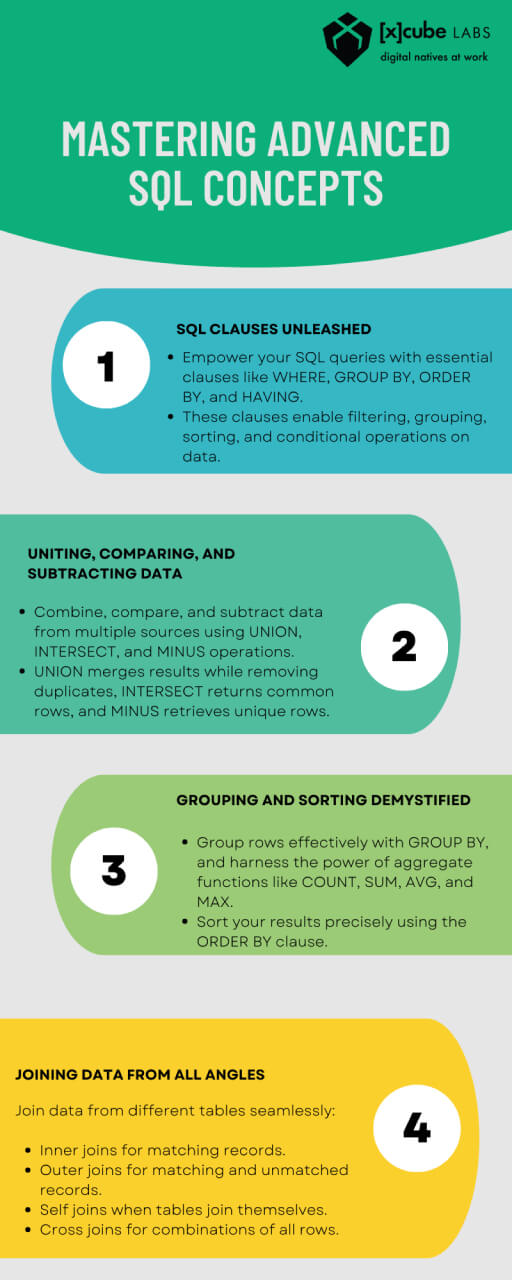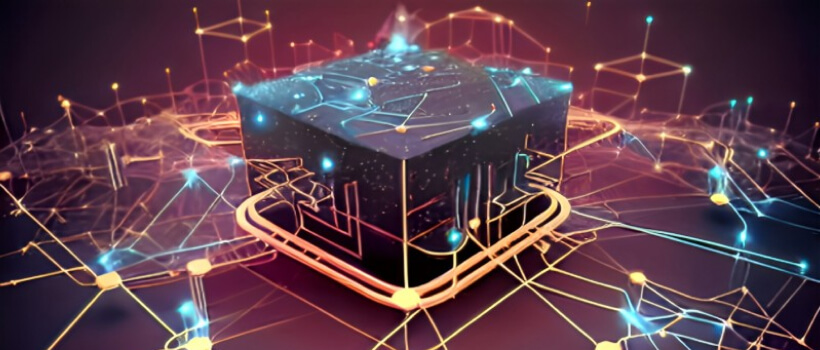
Microservices architecture involves developing a software application as a collection of loosely coupled, independently deployable services. Integrating microservices with Kubernetes has become a cornerstone strategy in today’s software ecosystem.
Microservices, renowned for their agility and scalability, paired with Kubernetes’ robust container orchestration capabilities, offer a powerful symbiosis driving modern software development.
Understanding how Kubernetes seamlessly manages, scales, and maintains these microservices is pivotal for maximizing efficiency and reliability in distributed applications.
This exploration delves into Kubernetes’s pivotal role in orchestrating microservices, elucidating its indispensable features that enable the smooth operation and optimization of containerized applications.
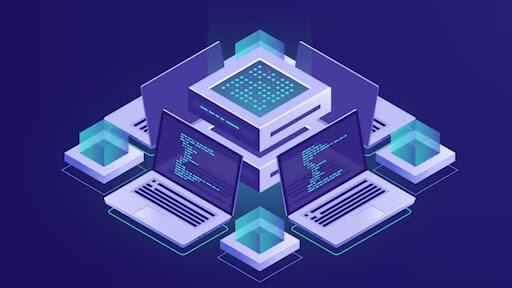
Microservices architecture involves developing a software application consisting of loosely coupled, independently deployable services that work on some fundamental principles.
- Decentralization: Each service operates independently, focusing on a specific business capability.
- Scalability: Services can be scaled individually based on demand, enhancing performance and resource utilization.
- Resilience: Failures in one service do not cascade across the entire system due to isolation and fault tolerance.
- Flexibility and Agility: Microservices enable rapid development, deployment, and updates, allowing quicker adaptation to changing business needs.
Watch our webinar on transitioning from monolithic to microservices and why it’s essential: Unlock the Future: Turbocharge Your Legacy Systems with Microservices!
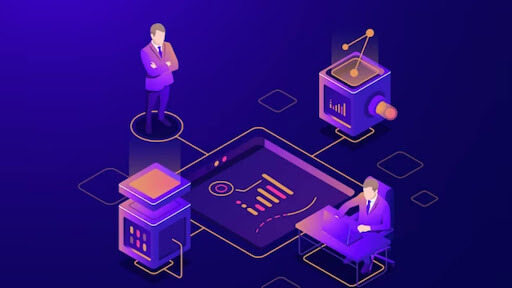
Orchestrating Microservices with Kubernetes
A. Deploying Microservices in Kubernetes
Microservices are typically containerized using technologies like Docker to ensure they are isolated and portable across environments. Kubernetes supports containerization by managing and orchestrating these containers efficiently. Kubernetes organizes containers into units called pods. Pods are the basic deployment unit in Kubernetes, comprising one or more tightly coupled containers and sharing resources.
B. Service Discovery and Load Balancing
Kubernetes Services act as an abstraction layer for accessing microservices. They enable inter-service communication by providing a stable endpoint for one set of microservices to interact with another. Kubernetes offers built-in load-balancing capabilities to administer traffic across multiple instances of a microservice, ensuring efficient resource utilization and high availability.
C. Scaling and Managing Microservices
Kubernetes allows scaling microservices horizontally (increasing the number of instances) and vertically (increasing the resources of individual cases) based on demand. Kubernetes provides auto-scaling capabilities, allowing microservices to adjust their capacity dynamically based on defined metrics or thresholds.
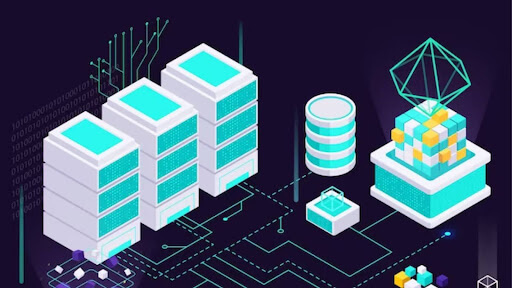
Monitoring and Logging in Kubernetes for Microservices
Monitoring and logging in Kubernetes for microservices are crucial in ensuring distributed applications’ health, performance, and security. Organizations can effectively manage their microservices ecosystem within Kubernetes by employing efficient monitoring and logging strategies.
A. Monitoring Microservices Health and Performance
- Prometheus: Kubernetes-native monitoring system commonly used for collecting metrics and monitoring various aspects of microservices. It offers a flexible querying language and powerful alerting capabilities.
- Grafana: Prometheus often uses visualization tools to create dashboards and visual representations of collected metrics. It provides a user-friendly interface to monitor the health of microservices.
- cAdvisor: Container Advisor is an open-source agent that collects, aggregates, and analyzes container resource usage and performance metrics in a Kubernetes cluster.
- Kube-state-metrics is a service that listens to the Kubernetes API server and provides metrics about the state of various Kubernetes objects, such as deployments, nodes, pods, etc.
- Custom Metrics: Kubernetes allows creating and monitoring custom metrics based on the requirements of specific microservices. These can include application-level metrics, latency, request rates, error rates, etc.
- Dashboard Creation: Utilizing Grafana to create custom dashboards that display real-time metrics from various microservices running in the Kubernetes cluster. This aids in visualizing performance and health metrics for better analysis and decision-making.
Also Read: Microservices Architecture: The Ultimate Migration Guide.
B. Logging and Tracing Microservices
- Elasticsearch, Fluentd, Kibana (EFK): A popular stack for logging in Kubernetes. Fluentd is used for log collection, Elasticsearch for log storage and indexing, and Kibana for visualization and querying.
- Container Runtime Logs: Kubernetes provides access to container logs, which can be accessed using commands like kubectl logs <pod_name>.
- Cluster-Level Logging: Kubernetes allows configuration at a cluster level, enabling centralized management and analysis of microservices’ logs.
- OpenTelemetry is an open-source observability framework for instrumenting, generating, collecting, and exporting telemetry data (traces, metrics, logs) from microservices in a standardized format.
- Jaeger is a distributed tracing system integrated with Kubernetes for monitoring and troubleshooting. It helps trace requests as they propagate through microservices, allowing for insights into their behavior and performance.
- Zipkin: Another distributed tracing system that helps identify performance bottlenecks and understand dependencies between microservices.
Optimizing monitoring and logging in Kubernetes for microservices involves:
- Selecting appropriate tools.
- Configuring them to gather essential metrics and logs.
- Visualizing the collected data through dashboards and tracing tools.
Security and Best Practices
Certainly! Security is a critical aspect when orchestrating microservices with Kubernetes. Implementing best practices ensures the protection of sensitive data, secure communication between microservices, and safeguarding the Kubernetes infrastructure.
A. Securing Microservices in Kubernetes
- Network Policies: Kubernetes allows the definition of network policies to control traffic between pods. These policies define how groups of pods communicate with each other. Implementing network policies ensures that only necessary communication between microservices occurs, enhancing security by restricting unauthorized access.
- Encryption and Authentication: Kubernetes supports encryption mechanisms for communication between microservices. Employing authentication mechanisms like mutual TLS (Transport Layer Security) for pod-to-pod communication ensures encrypted data transfer, reducing the risk of pirated access or interception.
- Service Meshes: Utilizing service mesh technologies like Istio or Linkerd can enhance security by providing capabilities for secure communication, observability, and policy enforcement between microservices.
- Authorization Policies: RBAC in Kubernetes allows fine-grained control over who can access and act on operations on resources within a cluster. Implementing RBAC involves defining roles, role bindings, and service accounts to grant specific users or service permissions.
- Least Privilege Principle: Ensuing the principle of least privilege assures that each component of a microservice architecture in Kubernetes has the minimal permissions necessary to perform its tasks. This reduces the attack surface and mitigates potential security threats.
B. Best Practices for Managing Microservices with Kubernetes
Implementing CI/CD pipelines ensures seamless and automated deployment of microservices. Integrating Kubernetes with CI/CD tools like Jenkins, GitLab CI/CD, or Argo CD enables continuous integration, testing, and deployment, ensuring consistency and reliability in deploying microservices.
Following the immutable infrastructure approach helps maintain consistency and reliability. In Kubernetes, this involves deploying new versions of microservices by creating entirely new instances (pods) rather than modifying existing ones, reducing risks associated with updates.
Kubernetes allows for rolling updates, ensuring zero-downtime deployments by gradually updating microservices instances while maintaining application availability.
Employing versioning practices for microservices ensures better management and tracking of changes. Kubernetes allows multiple versions of microservices to run concurrently, facilitating A/B testing and gradual rollout of new features while monitoring performance.
Implementing these security measures and best practices within Kubernetes ensures a robust and secure environment for managing microservices effectively, addressing critical security, deployment, and maintenance concerns.
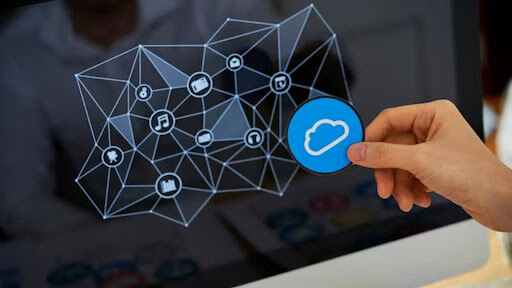
Real-world examples of companies using Kubernetes for microservices
Several prominent companies have adopted Kubernetes to manage their microservices architecture, leveraging its capabilities to enhance scalability, agility, and reliability. Here are some real-world examples:
Netflix: As a pioneer in video streaming services, Netflix heavily relies on microservices architecture and Kubernetes to handle its vast array of services. Kubernetes assists Netflix in managing its dynamic workloads efficiently. By leveraging Kubernetes, Netflix can scale services according to demand, ensuring a seamless streaming experience for millions of users worldwide.
Spotify: Spotify, a popular music streaming platform, uses Kubernetes extensively to power its microservices infrastructure. Kubernetes enables Spotify to manage its complex ecosystem of microservices efficiently. It allows them to deploy, manage, and scale various services, ensuring high availability and reliability for their music streaming platform.
Uber, a leading ride-sharing service, relies on Kubernetes to manage its diverse microservices. Kubernetes helps Uber handle the massive scale of their operations, ensuring quick and efficient deployment of new features and updates. It allows Uber to manage its services across different regions while maintaining reliability and scalability.
Airbnb: Airbnb, a global online marketplace for lodging and tourism experiences, utilizes Kubernetes to manage its microservices architecture effectively. Kubernetes assists Airbnb in orchestrating its services, enabling the platform to scale dynamically based on demand. This ensures a seamless experience for hosts and guests while maintaining service reliability.
Pinterest: Pinterest, a visual discovery engine, adopted Kubernetes to manage its microservices infrastructure efficiently. Kubernetes helps Pinterest deploy and scale services rapidly, ensuring optimal performance for its users. This enables Pinterest to handle varying workloads and maintain service availability during peak usage times.
GitHub: GitHub, a popular platform for software development collaboration, employs Kubernetes to manage its microservices architecture. Kubernetes enables GitHub to handle its diverse set of services effectively. It allows GitHub to scale services, deploy updates seamlessly, and maintain high availability for its users worldwide.
SoundCloud: SoundCloud, an online audio distribution platform, utilizes Kubernetes to manage its microservices infrastructure. Kubernetes helps SoundCloud orchestrate its services, optimize resource utilization, and ensure high availability for its music streaming services.
These real-world examples highlight how various industry-leading companies leverage Kubernetes to manage their microservices efficiently. By adopting Kubernetes, these companies achieve enhanced scalability, reliability, and agility in their operations, ultimately providing better services to their users.
Conclusion
As we culminate this exploration, it’s abundantly clear that Kubernetes is a microservices management mainspring. Its role in facilitating microservices architecture’s efficient deployment, scalability, and administration cannot be overstated.
With its sophisticated container orchestration capabilities, Kubernetes is the backbone for tackling the intricate challenges inherent in microservices-based applications. Its prowess in automating deployment routines, orchestrating container scaling, and handling containerized applications’ lifecycles brings unparalleled operational efficiency to the fore.
In the intricate web of microservices, where applications comprise multiple autonomous services, Kubernetes emerges as the central nervous system. Its suite of functionalities, including service discovery, load balancing, and automated scaling, fosters seamless communication and resource allocation among these microservices, fostering an environment primed for agility and adaptability.
The paramount significance of Kubernetes in efficiently managing microservices lies in its ability to abstract the complexities of underlying infrastructures. It provides a standardized, consistent environment where microservices can operate uniformly across various deployment scenarios, simplifying management and scalability across diverse infrastructure setups.
Furthermore, Kubernetes fortifies microservices’ resilience and dependability by offering self-healing, rolling updates, and automated recovery features. These capabilities ensure microservices’ continual availability and responsiveness, minimizing downtimes and amplifying the overall reliability of the application ecosystem.
With the proliferation of microservices architecture as the go-to approach for scalability and resilience, Kubernetes has emerged as a pivotal technology. Its versatile toolkit and adaptability make it an indispensable asset in managing the intricacies synonymous with microservices, empowering businesses to innovate rapidly and deliver robust, scalable applications to their users.
In summary, the symbiotic relationship between Kubernetes and microservices architecture forms the bedrock of modern application development and deployment. Kubernetes’ ability to manage and orchestrate microservices simplifies complexities and lays the groundwork for scalable, resilient, and agile applications, steering businesses toward success in today’s competitive landscape.
As the adoption of microservices continues its upward trajectory, Kubernetes remains an indispensable catalyst, ensuring the efficient management and operation of these dynamic, distributed architectures.
How can [x]cube LABS Help?
[x]cube LABS’s teams of product owners and experts have worked with global brands such as Panini, Mann+Hummel, tradeMONSTER, and others to deliver over 950 successful digital products, resulting in the creation of new digital revenue lines and entirely new businesses. With over 30 global product design and development awards, [x]cube LABS has established itself among global enterprises’ top digital transformation partners.
Why work with [x]cube LABS?
- Founder-led engineering teams:
Our co-founders and tech architects are deeply involved in projects and are unafraid to get their hands dirty.
- Deep technical leadership:
Our tech leaders have spent decades solving hard technical problems. Having them on your project is like instantly plugging into thousands of person-hours of real-life experience.
- Stringent induction and training:
We are obsessed with crafting top-quality products. We hire only the best hands-on talent. We train them like Navy Seals to meet our own standards of software craftsmanship.
- Next-gen processes and tools:
Eye on the puck. We constantly research and stay up-to-speed with the best technology has to offer.
- DevOps excellence:
Our CI/CD tools ensure strict quality checks to ensure the code in your project is top-notch.
Contact us to discuss your digital innovation plans, and our experts would be happy to schedule a free consultation!
 1-800-805-5783
1-800-805-5783